Key takeaways
- • Ratio tables are tools used to visualize how quantities change within a ratio.
- • A ratio table is based on one ratio.
- • Whatever happens to one side of a ratio must happen to the other side to maintain the relationship.
Ratios and ratio tables go hand in hand; you can’t learn about one without the other.
Ratio tables are one of the many helpful tools in math that allow students and mathematicians alike to visualize complex ideas.
Understanding ratios is essential to understanding quantities and their relationships, and with a ratio table, you can bring that ratio to life, analyzing it as quantities grow or shrink.
If you know how to use ratio tables, you can easily scale recipes, calculate measurements, manage your finances, and so much more! So, let’s answer the question “What is a ratio table?” and discuss how to use them.
What is a ratio table?
Ratio tables in math demonstrate how a ratio affects two quantities as the quantities get larger or smaller. Ratio tables can be formatted horizontally or vertically, and they are always split into two halves; one half representing one quantity, and the other half representing another quantity.
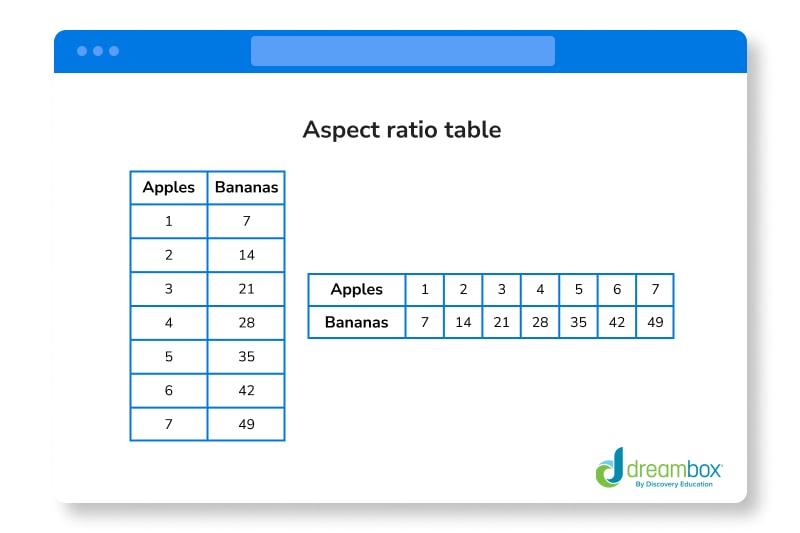
This ratio table shows the relationship between the quantity of apples to bananas in a fruit store display. Even though one version of the ratio table is vertical and the other is horizontal, both versions are the same.
So, what does this table tell us?
The tables above tell us that for every 1 apple, there are 7 bananas. Therefore, the ratio of this ratio table is 1:7. Moving along the table, as the numbers grow, the ratio always stays the same.
The far end of the table says for every 7 apples, there are 49 bananas, which can be represented by the ratio 7:49. If we simplify that by dividing both numbers by 7, we get 1:7.
A ratio table is based on a single ratio. Therefore, the ratio must never change.
When working with ratio tables, some spaces within the table may be left blank. It is your job to fill in those blanks using the given ratio by either multiplying or dividing the quantities.
If you’re not sure how to do that, don’t worry! Let’s talk about how to make and fill in your own ratio tables.
How to do ratio tables
Working with ratio tables involves two things: making ratio tables and filling in ratio tables. Let’s first discuss how you can make a ratio table, then talk about how to do ratio tables if some spaces within the table are empty.
Making Ratio Tables
You can make a ratio table based on any ratio. Look at the image below.
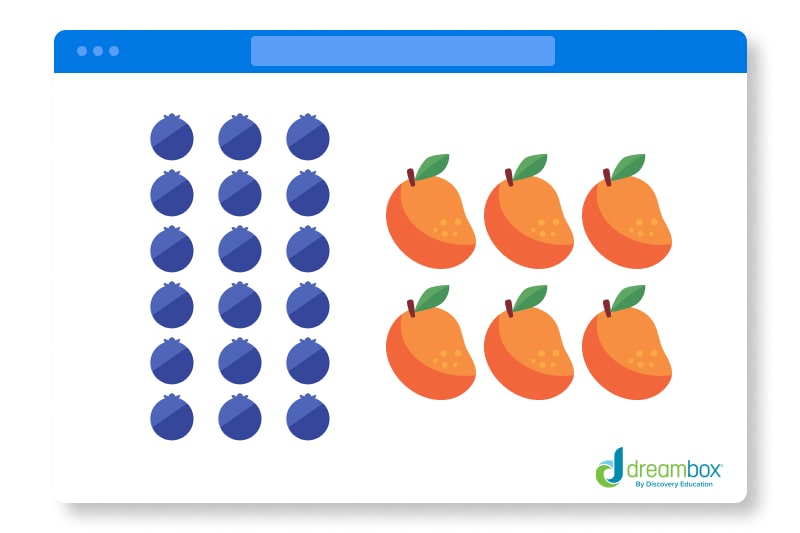
Let’s make a ratio table using the information you can gather from the image above.
First, figure out the ratio of blueberries to mangoes. (You can find the ratio of mangoes to blueberries as well—the order of the ratio doesn’t matter as long as the ratio itself is correct.)
The ratio of blueberries to mangoes is 18 to 6.
Next, make your ratio table. Create a table with two halves. Give each fruit its own half.
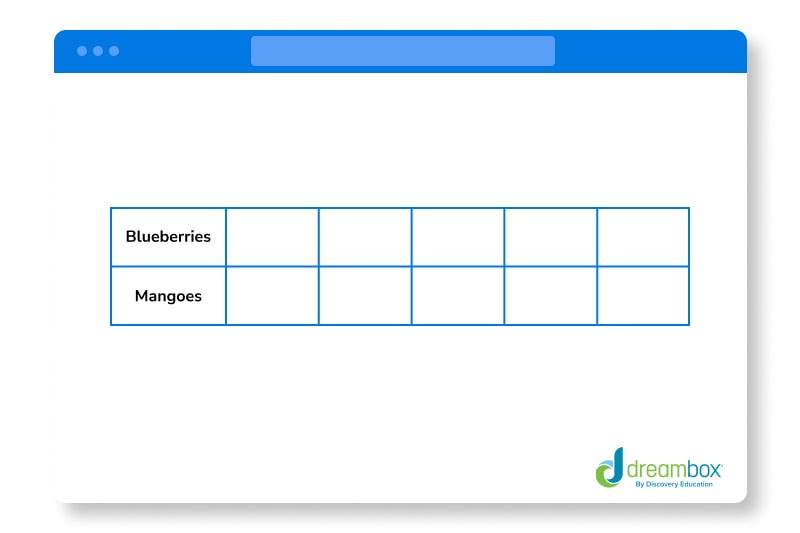
Place the ratio quantities into the table.
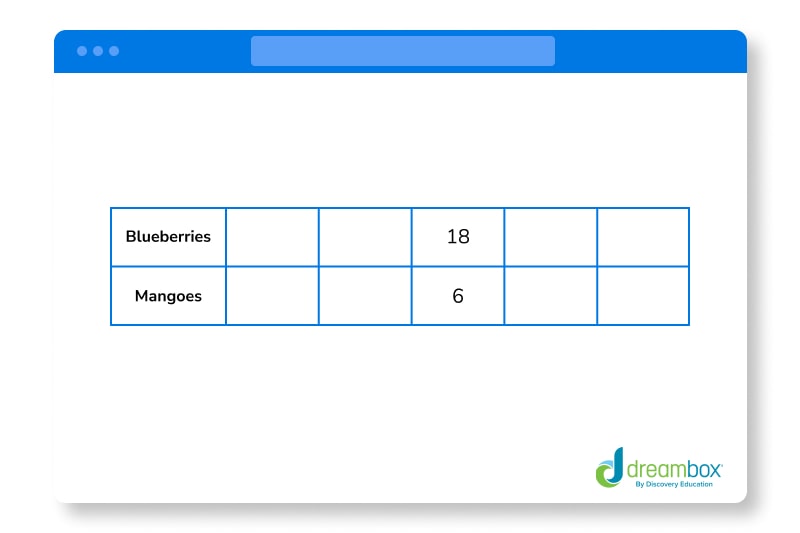
Table of contents
Get more math practice with DreamBox!
Turn math into playtime with DreamBox Math
DREAMBOX MATH
Get started for FREE today!
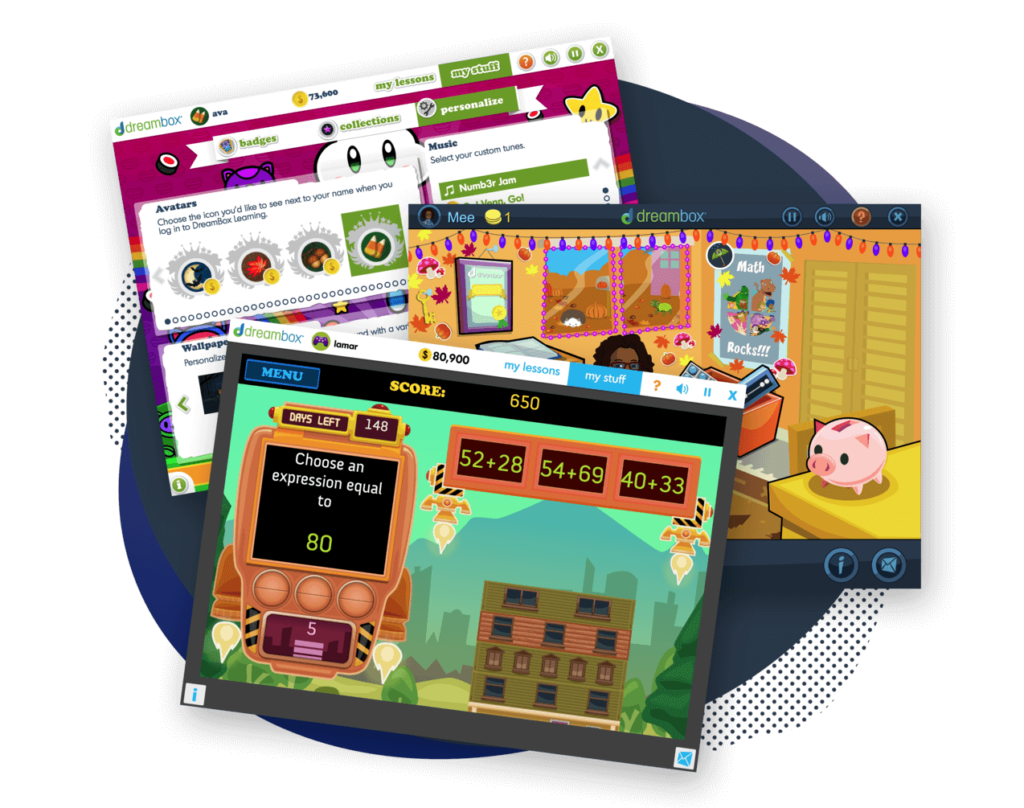
Filling the Tables In
Once you have a ratio table with a defined ratio, the next step is knowing how to complete a ratio table—filling in all the blank spaces.
Using the information we already have, how would you fill in the following table?
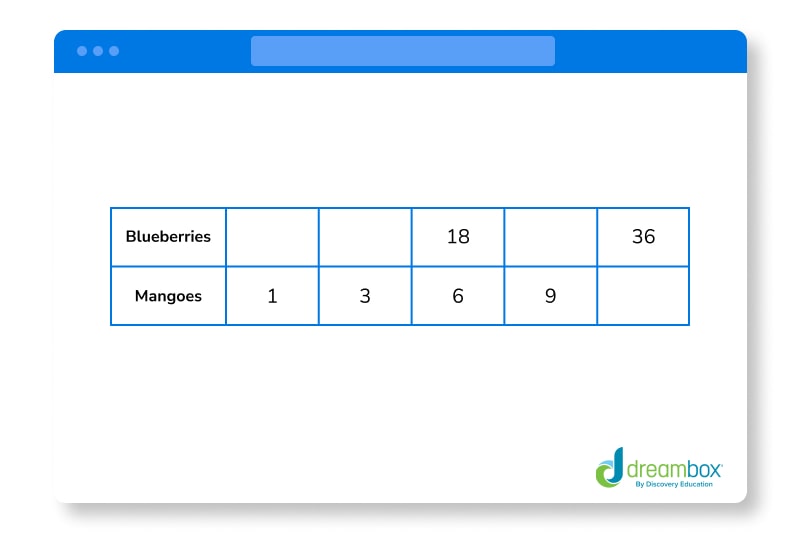
To solve, first focus on the mangoes. In the 3rd space, there are 6 mangoes. In the second, there are 3. How can we get from 6 to 3 using either multiplication or division?
We can divide 6 by 2 to get 3.
And, when working with ratios, when one quantity changes, the other quantity must change in the same way. Therefore, let’s divide 18 by 2 as well.
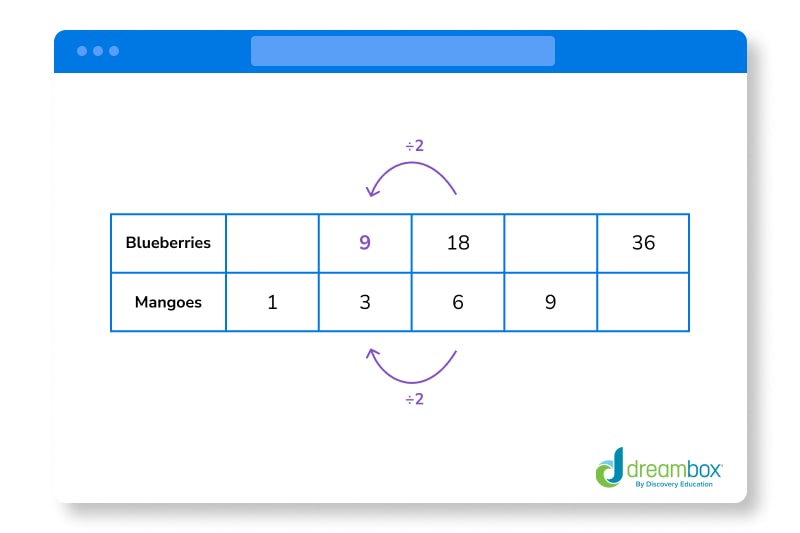
Continue with this method to solve for the first space.
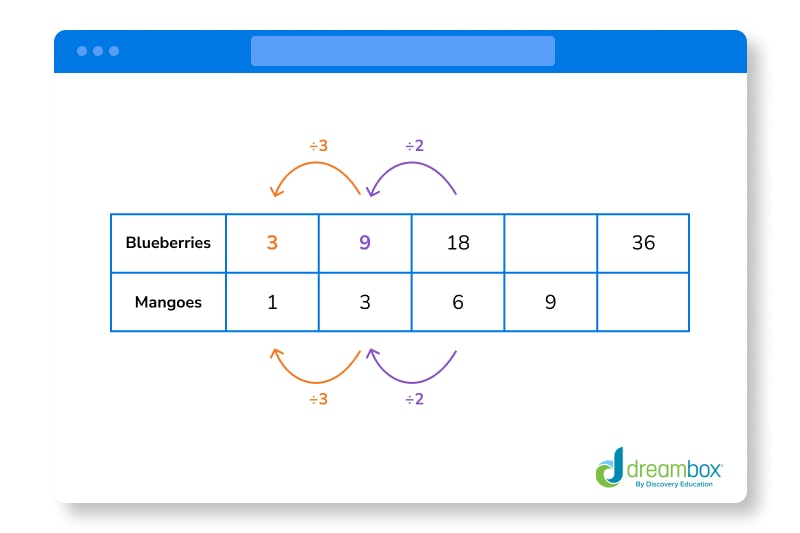
Once one of the numbers in the table or ratio is 1, filling in everything else is a lot easier!
We now know that the ratio of blueberries to mangoes can be simplified to 1:3. To solve for the fourth space, just multiply 9 mangoes by 3 to get 27 blueberries.
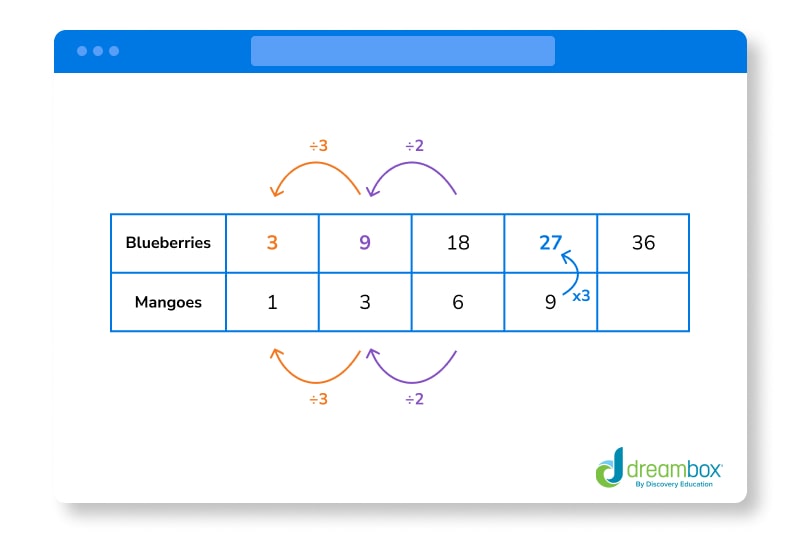
Every quantity of mangoes can be multiplied by 3 to determine the quantity of blueberries. That means that any quantity of blueberries can be divided by 3 to determine the quantity of mangoes.
With that in mind, fill in the last empty space in the table.
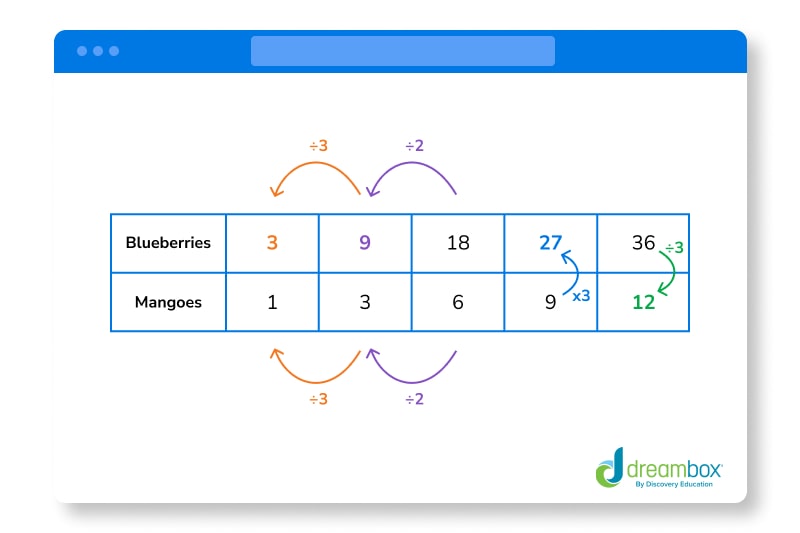
Another method for filling in this ratio table would be to consider the ratio as if it were a fraction.
Remember, ratios are just fractions! If we know that the ratio of blueberries to mangoes is 18 to 6, you can divide 18 by 6 to simplify the ratio: 18 ÷ 6 = 3. Therefore, the simplified ratio is 3 to 1.
You can use that information to fill in every blank space in the table by either multiplying the number of mangoes by 3 or dividing the number of blueberries by 3.
Let’s take a look at a few more ratio table examples.
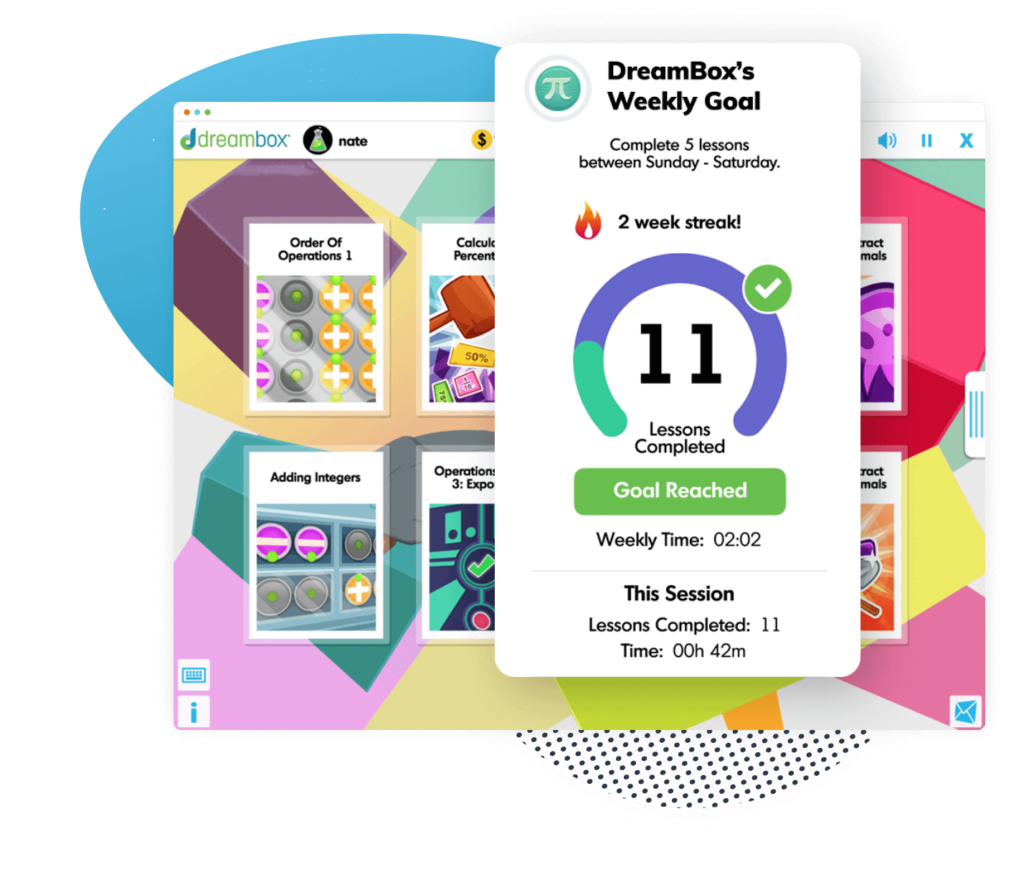
The math program that drives results
Get started today!
DreamBox adapts to your child’s level and learning needs, ensuring they are appropriately challenged and get confidence-building wins.
Ratio Table Examples
Examine the following three examples of ratio tables to better understand how ratio tables work and how they can be used.
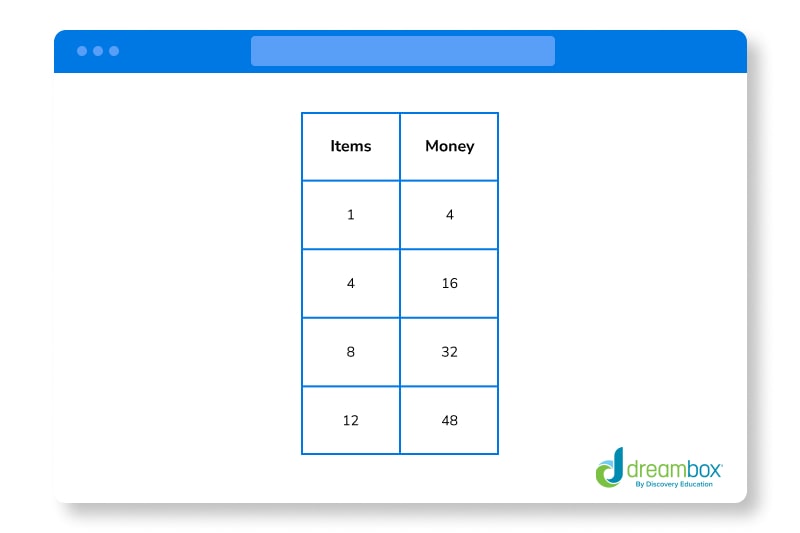
The equivalent ratio to this ratio table is 1:4, or 1 item to every 4 dollars. This ratio table demonstrates how many items you can purchase at a store, depending on how much money you have.
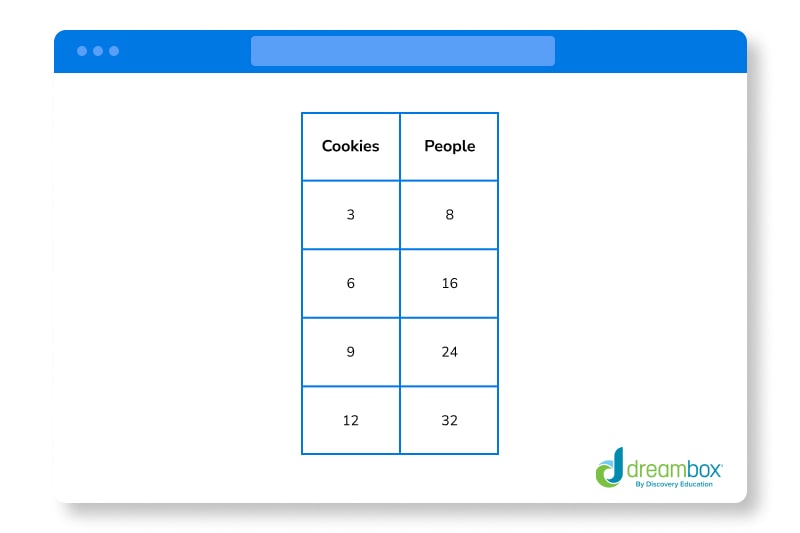
The ratio for this table is 3:8, or 3 servings of cookies to every 8 party guests. With this ratio table, you can determine how many servings of cookies you would need to make, depending on how many people you invite to a party.
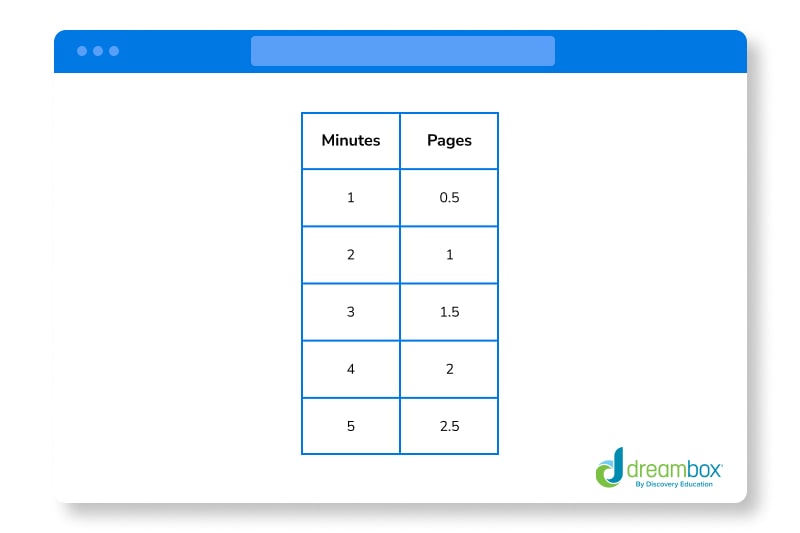
This table uses a ratio of 2:1, or 2 minutes to every 1 page of a book. You can use this ratio table to figure out how long it will take you to read a certain number of pages in a book.
Ratio Table Practice Problems
You can’t master ratio tables without doing some practice problems. Use the following 5 practice problems to strengthen your understanding of ratio tables.
Don’t worry if you get stuck! Try your best on your own, then review the answers after.
Q. Nadine is a florist. She calculates that she uses 39 bunches of flowers for every 6 bouquets she makes. Fill in the missing number in the following ratio table.
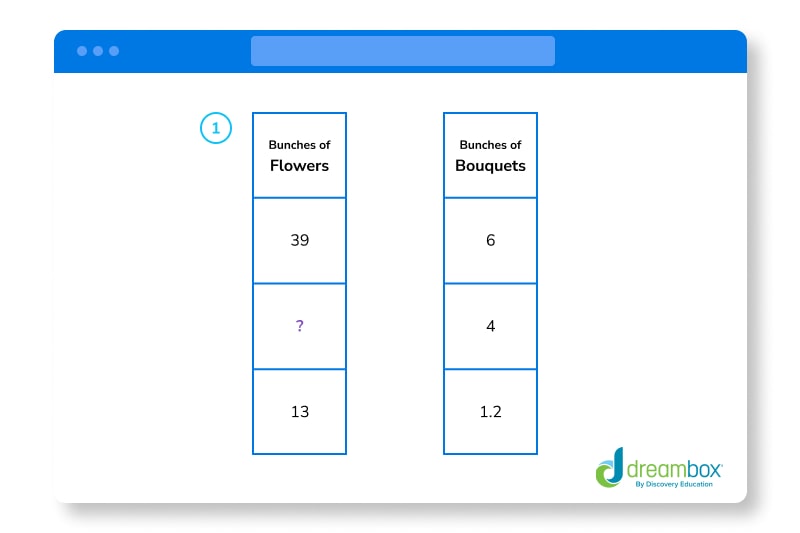
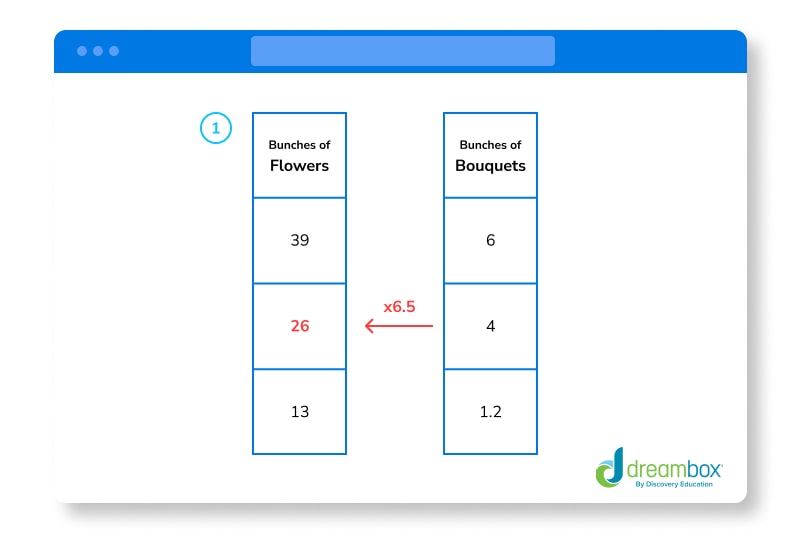
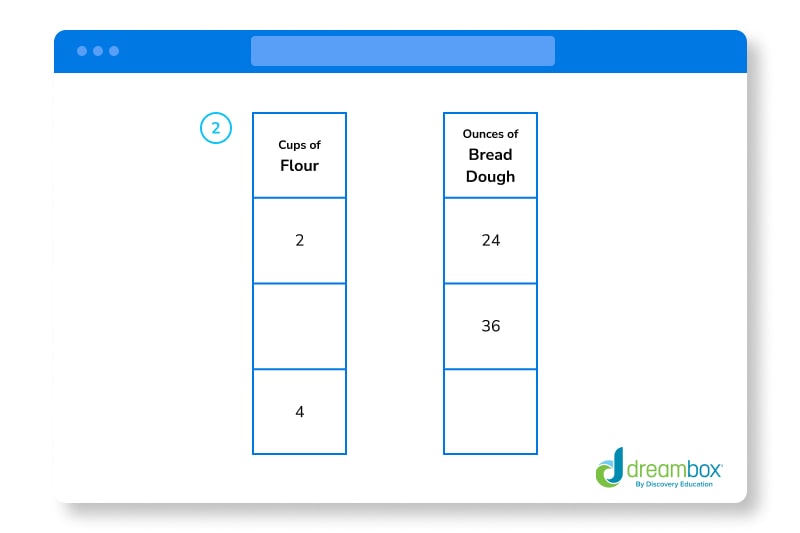
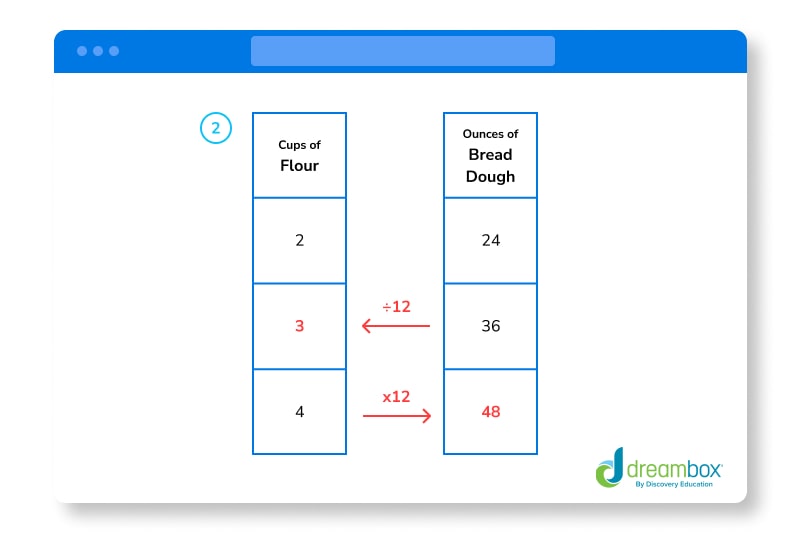
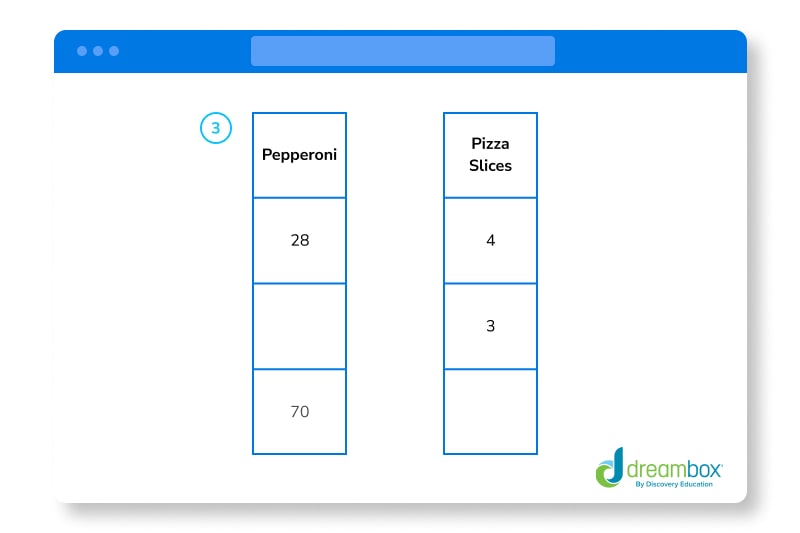
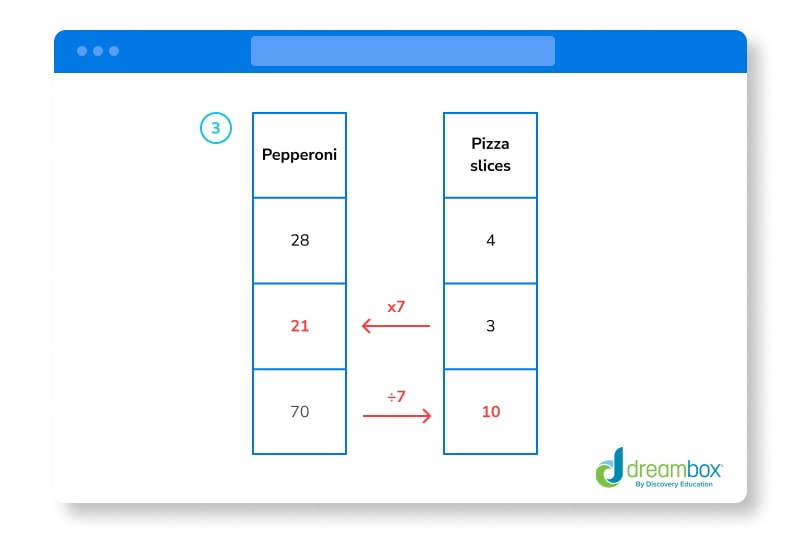
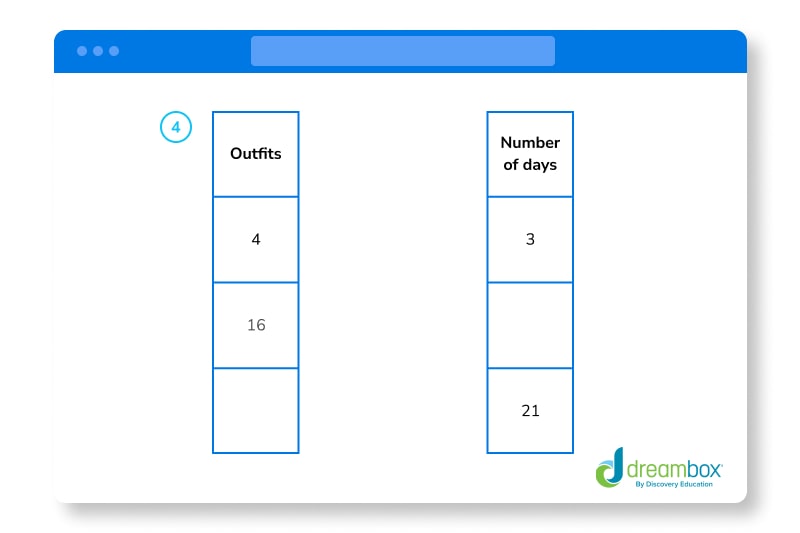
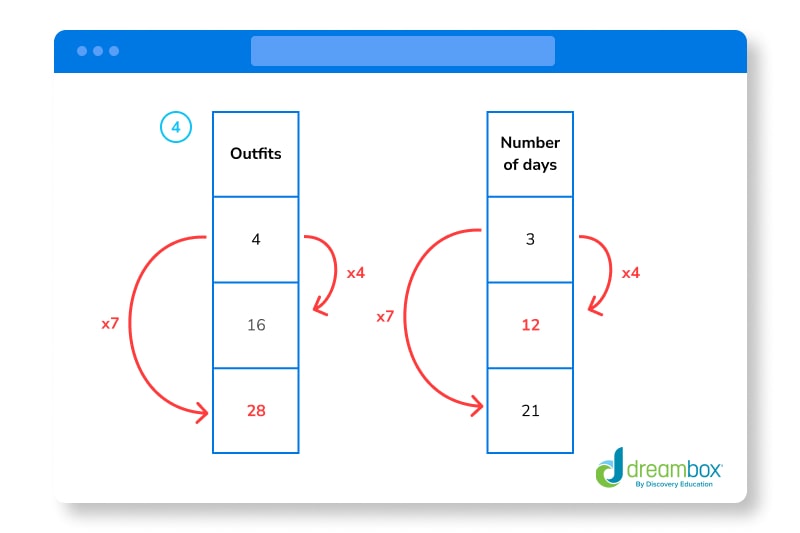
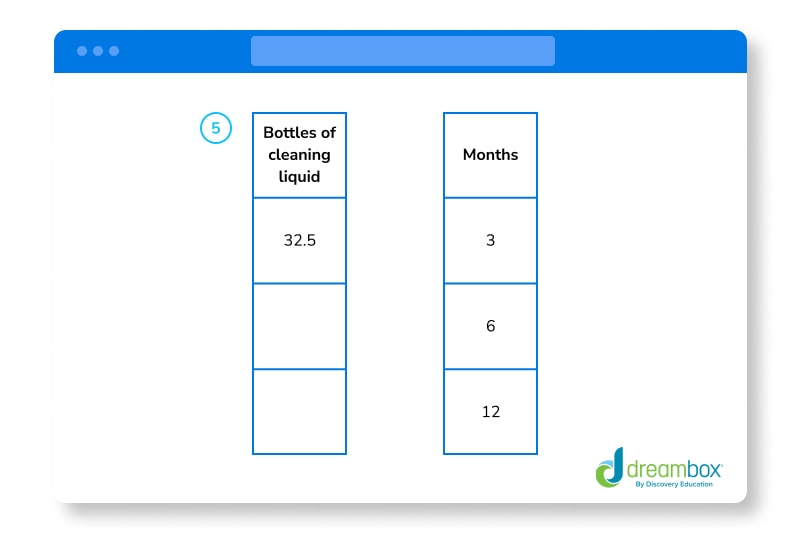
For more examples of ratio tables and practice problems, explore online math programs and math apps. Whether you feel confident with ratio tables or are still struggling to understand them, it never hurts to get more help.
Ratio tables are key parts of the curriculum for the 6th and 7th grades, but come in handy whether you’re in the kitchen, drafting a design as an architect, or calculating a company’s earnings as a financial advisor.
Understanding how ratio tables work can benefit countless areas of your life now and years down the road.
Take at home math practice to the next level
Empowering parents and educators to make math practice more impactful. Plus, your kids will love it.


About the Author
Tess Loucka
Tess Loucka discovered her passion for writing in high school and has not stopped writing since. Combined with her love of numbers, she became a math and English tutor, focusing on middle- and high-school-level topics. Since graduating from Hunter College, her goal has been to use her writing to spread knowledge and the joy of learning to readers of all ages.